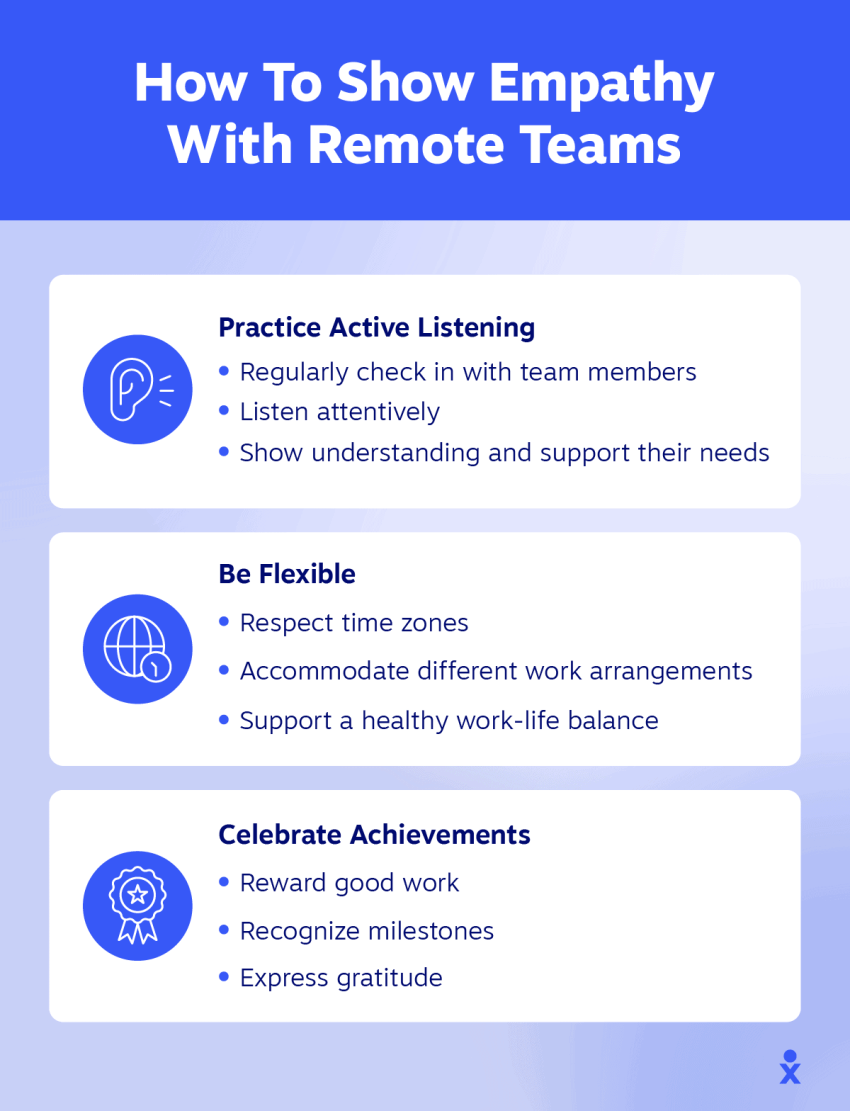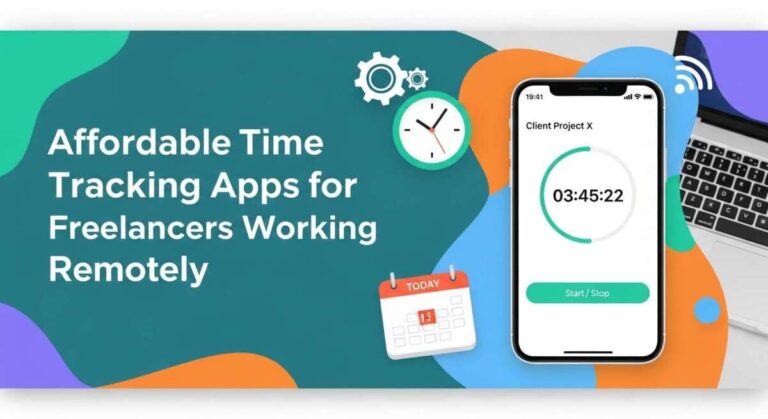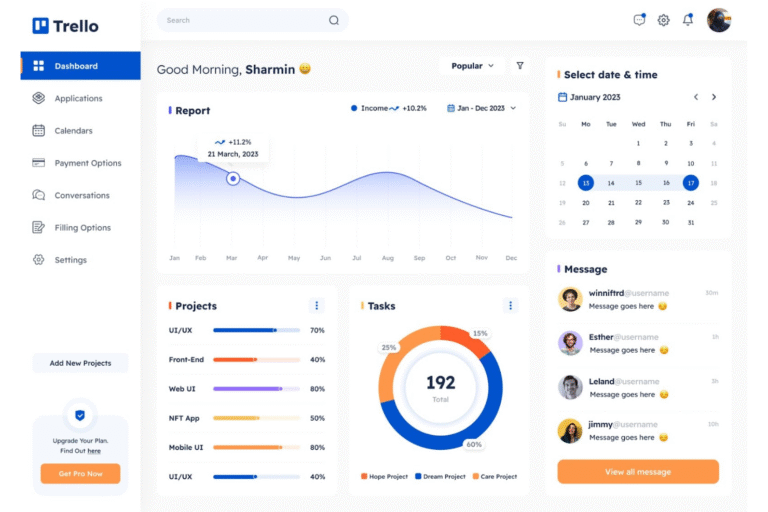Tech Tips for Maintaining Work Life Balance Remotely: Ultimate Guide
Are you finding it tricky to switch off from work when your home doubles as your office? Balancing your professional tasks with personal life can feel like walking a tightrope, especially when the boundaries blur.
But what if simple tech strategies could help you regain control and bring harmony back to your day? You’ll discover practical tips that use everyday technology to help you create clear work-life boundaries, boost your productivity, and protect your well-being—all from the comfort of your home.
Keep reading to unlock easy, actionable steps that make remote work feel less overwhelming and more balanced.
Set Clear Work Hours
Setting clear work hours plays a vital role in balancing work and personal life remotely. It helps separate professional tasks from home life, reducing stress. Clear hours build structure, allowing focus during work and relaxation after.
Without fixed hours, work can spill into personal time. This leads to burnout and lowers productivity. Defining work hours creates boundaries, so you know when to start and stop. It also supports mental health by preventing overwork.
Create A Consistent Schedule
Design a daily routine that matches your natural energy levels. Start work at the same time each day to build habit. Consistency trains your brain to focus during work hours.
Keep breaks and lunch times regular too. This prevents fatigue and keeps productivity steady. Use alarms or calendar reminders to stick with your schedule.
Use Time Blocking Techniques
Divide your workday into blocks dedicated to specific tasks. Time blocking limits distractions and improves focus. Assign each task a start and end time.
This method helps prioritize urgent work and manage long projects. It also creates clear pauses between tasks, allowing mental rest. Use apps or planners to organize your blocks visually.
Communicate Availability
Inform colleagues and family about your work hours clearly. Set expectations for when you can respond to messages and calls. This reduces interruptions and confusion.
Use status tools on chat apps or email to show when you are busy or free. Being transparent about your schedule helps others respect your boundaries. It supports a smoother workflow and better relationships.
Designate A Workspace
Designating a specific workspace plays a vital role in maintaining a healthy work-life balance while working remotely. It creates a mental boundary between professional tasks and personal life. This separation helps you focus during work hours and relax afterward. A well-chosen workspace boosts productivity and reduces stress.
Separate Work From Home Areas
Choose a spot dedicated only to work. Avoid places linked to relaxation, like the bedroom or couch. This clear division helps your brain switch between work mode and home mode. It makes it easier to stop working at the end of the day.
Optimize Ergonomics And Comfort
Set up your workspace with comfort in mind. Use a chair that supports your back well. Keep your computer screen at eye level to prevent neck strain. A comfortable space reduces physical fatigue and keeps you focused longer.
Minimize Distractions
Keep your workspace free from noise and interruptions. Use noise-canceling headphones if needed. Turn off notifications on your phone or computer during work hours. A quiet area helps you concentrate and finish tasks faster.
Leverage Productivity Tools
Using productivity tools helps keep work and life in balance. These tools organize tasks and manage time clearly. They reduce stress by making workloads easier to handle. Remote work demands clear schedules and task tracking to stay productive.
Choose tools that fit your style. Simple apps can boost your efficiency. These tools save time, letting you focus on both work and personal life.
Utilize Calendars And To-do Lists
Calendars show your daily schedule at a glance. Mark work hours, meetings, and breaks clearly. To-do lists keep track of tasks and deadlines. Check off items as you complete them. This method prevents forgetting important duties and keeps your day organized.
Adopt Task Management Apps
Task management apps help sort jobs by priority and due date. Assign tasks to specific times or team members. These apps send reminders to avoid missing deadlines. They also offer progress tracking, which boosts motivation. Use apps that sync across devices for access anywhere.
Automate Repetitive Tasks
Automation tools handle routine jobs like emails or data entry. Set rules to send automatic replies or schedule reports. This frees time for more important work and rest. Automation reduces errors and keeps tasks consistent. Simple automation saves effort and helps maintain balance.
Establish Boundaries
Setting clear boundaries is essential to keep work and personal life separate. Boundaries help create a focused work environment and protect personal time. Without boundaries, work can easily take over your day, causing stress and burnout. Remote work blurs the line between office and home, so setting limits becomes even more important. Simple tech habits can support these boundaries and improve your overall balance.
Turn Off Work Notifications
Work notifications can interrupt your personal time and increase stress. Turn off notifications outside work hours to avoid distractions. Use your phone and computer settings to silence email and app alerts. This helps your mind relax and focus on family or hobbies. Consistent breaks from work messages improve mental health and productivity.
Set Clear Expectations With Family
Explain your work schedule to your family members clearly. Let them know when you are busy and cannot be disturbed. This reduces interruptions and helps keep your focus during work hours. Use shared calendars or reminders to show your availability. Clear communication builds respect for your work time and personal space.
Use ‘do Not Disturb’ Modes
Activate ‘Do Not Disturb’ mode on devices during work or rest periods. This stops calls, messages, and notifications from breaking your concentration. Schedule these modes automatically to match your work hours and breaks. This technology helps maintain focus and signals others when you are not available. It supports a healthy separation between work and home life.
Incorporate Regular Breaks
Taking regular breaks during remote work is essential for maintaining a healthy work-life balance. Short pauses help refresh the mind and boost focus. These breaks prevent fatigue and reduce stress levels. Incorporating breaks into your daily routine supports both productivity and well-being.
Follow The Pomodoro Technique
The Pomodoro Technique divides work into focused intervals, usually 25 minutes long. After each session, take a 5-minute break to rest your eyes and stretch. Every four intervals, enjoy a longer break of 15 to 30 minutes. This method helps maintain concentration and avoids burnout during long workdays.
Engage In Physical Activity
Moving your body during breaks improves circulation and energy. Simple exercises like stretching, walking, or light yoga refresh both mind and body. Physical activity reduces tension and helps clear your thoughts. Regular movement enhances mood and productivity throughout the day.
Practice Mindfulness And Relaxation
Mindfulness exercises calm the mind and reduce stress. Techniques like deep breathing or short meditation sessions fit well into break times. These moments of relaxation improve focus and emotional balance. Practicing mindfulness helps separate work time from personal time effectively.
Prioritize Health And Wellness
Prioritizing health and wellness is essential for maintaining a strong work-life balance while working remotely. Taking care of your body and mind boosts energy and sharpens focus. Small daily habits can make a big difference in your overall well-being. Here are some tech tips to help you stay healthy and balanced.
Maintain Consistent Sleep Schedule
Set a regular bedtime and wake-up time, even on weekends. Use apps or alarms to remind you when it’s time to sleep. A steady sleep routine improves mood and productivity. Avoid screens at least 30 minutes before bed to help your brain relax. Good sleep helps you handle work stress better.
Plan Healthy Meals
Use meal planning apps to organize your weekly food choices. Choose balanced meals with vegetables, proteins, and whole grains. Preparing meals in advance saves time and reduces unhealthy snacking. Drink plenty of water throughout the day. Eating well fuels your body and keeps your mind clear.
Schedule Time For Exercise
Block out daily exercise time on your calendar like a work meeting. Use fitness apps or online classes to stay motivated. Even short walks or stretches improve circulation and reduce tension. Exercise releases endorphins that lift your mood. Staying active helps you feel refreshed and focused during work.
Use Technology To Stay Connected
Staying connected with colleagues and friends is key to balancing work and life remotely. Technology offers simple ways to keep in touch and feel part of a community. Using digital tools helps reduce loneliness and keeps communication clear. Here are some practical ways to use technology for connection.
Leverage Video Conferencing
Video calls make conversations more personal than emails or texts. They let you see facial expressions and body language. Schedule regular video meetings to discuss work and share ideas. Use platforms like Zoom or Microsoft Teams for easy access. Keep meetings short and focused to respect everyone’s time.
Engage In Virtual Social Activities
Join online activities like virtual coffee breaks or game sessions. These moments help build friendships and relieve stress. Plan fun events after work hours to separate job time from social time. Use apps that support group chats and video interactions. Socializing online keeps team spirit alive even from afar.
Join Online Communities
Find groups related to your job or hobbies on platforms like LinkedIn or Facebook. Participate in discussions to learn and share knowledge. Online communities offer support and motivation from peers worldwide. Engaging regularly helps you feel connected and inspired. Choose groups that match your interests and goals.
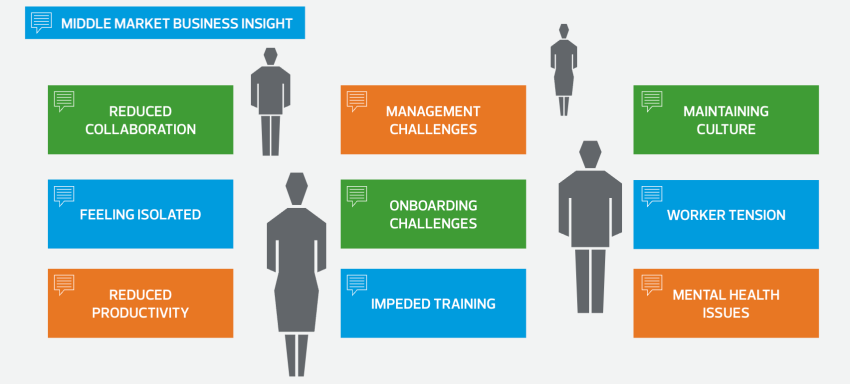
Credit: www.nextiva.com
Monitor And Adjust Routines
Monitoring and adjusting your daily routines is key to balancing work and life while working remotely. Regular checks help you spot what works and what drains your energy. This keeps your schedule effective and stress low.
Small changes in your routine can bring big improvements in focus and relaxation. Tracking your habits shows where time is lost or well spent. Reflection helps you understand your feelings and needs better.
Flexibility in your routine allows you to handle unexpected tasks or breaks without guilt. Adjusting your day helps keep work from taking over your personal life. It makes room for rest and activities that refresh you.
Audit Daily Time Usage
Start by recording how you spend your time each day. Use apps or a simple notebook to note work, breaks, and personal moments. This audit reveals hidden time wasters and overworking patterns.
Look for long periods without breaks or frequent task switching. Identify tasks that take more time than expected. Use this data to plan a balanced and realistic schedule.
Reflect Through Journaling
Write a few lines daily about your work and feelings. Journaling helps you track stress, motivation, and energy levels. It brings clarity to what disrupts your balance.
Note moments when you felt productive or relaxed. Record any challenges faced and ideas for change. This habit supports self-awareness and guides routine adjustments.
Adapt For Flexibility
Allow your routine to change based on daily demands and mood. Swap tasks or shift work hours to fit your energy peaks. Flexibility prevents burnout and keeps productivity steady.
Set boundaries but stay open to adjustments. Use technology tools like calendar alerts to remind you to pause or switch activities. Flexibility creates a healthy flow between work and life.
Manage Workload Effectively
Managing your workload effectively is vital for maintaining balance while working remotely. It helps you stay organized and reduces stress. Focus on planning your tasks smartly to finish work on time. Clear boundaries between work and personal life improve your overall well-being.
Using simple strategies makes your day productive and less overwhelming. Small changes can lead to better control over your work and free time.
Prioritize High-impact Tasks
Start your day by listing tasks that matter most. Choose those with the biggest effect on your goals. Complete these tasks first to see real progress. This method prevents wasting time on less important jobs. A clear priority list keeps your work focused and efficient.
Delegate When Possible
Sharing tasks lightens your workload and boosts team collaboration. Assign jobs to colleagues who have the right skills. Delegation frees up time for you to focus on critical work. It also builds trust and helps others grow. Use communication tools to track delegated tasks easily.
Avoid Multitasking
Concentrate on one task at a time for better results. Multitasking reduces focus and increases errors. Single-tasking improves quality and speeds up completion. Break big projects into smaller steps to handle them smoothly. This habit keeps your mind clear and work steady.
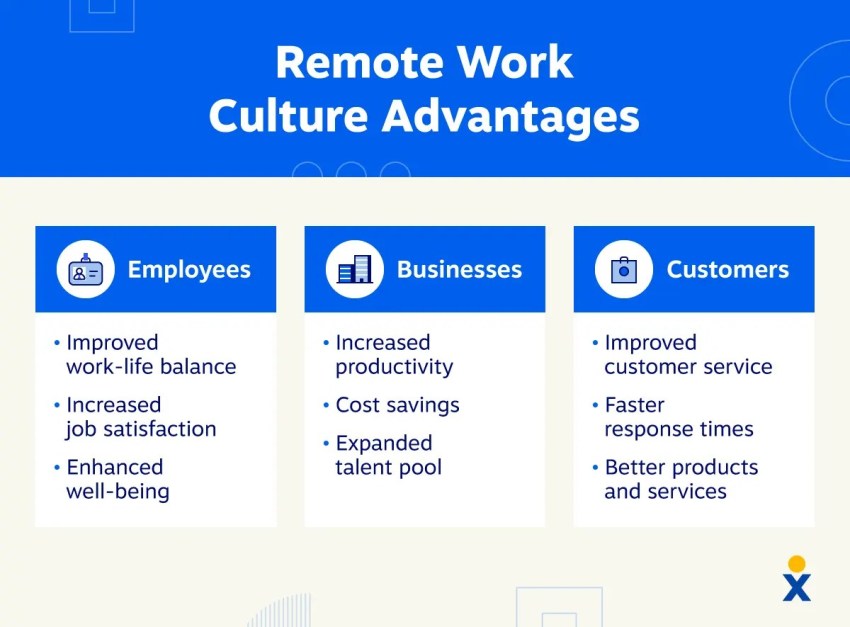
Credit: www.nextiva.com

Credit: www.workplaceblogsexpert.info
Frequently Asked Questions
How Can You Maintain A Work-life Balance While Working Remotely?
Maintain work-life balance remotely by setting clear work hours and breaks. Use calendars and to-do lists to organize tasks. Separate your workspace from personal areas. Prioritize tasks and disconnect from work notifications after hours. Establishing routines boosts productivity and well-being.
What Is The 8 8 8 Rule For Work-life Balance?
The 8 8 8 rule divides your day into 8 hours of work, 8 hours of rest, and 8 hours for personal activities. This balance boosts productivity, health, and life satisfaction.
What Is The 20 20 20 Rule Work-life Balance?
The 20-20-20 rule balances work-life by dividing the day into 20 hours for work, 20 hours for rest, and 20 hours for personal activities. This method prevents burnout, boosts productivity, and promotes overall well-being.
What Is The 60 40 Remote Working Policy?
The 60-40 remote working policy means employees work 60% of their time remotely and 40% in the office. This balance boosts productivity and work-life harmony.
Conclusion
Balancing work and life while working remotely takes effort. Use simple tech tools like calendars and reminders daily. Set clear work hours and take regular breaks for rest. Keep your workspace separate to focus better and relax after work. Remember, balance is about progress, not perfection.
Small changes make a big difference over time. Prioritize tasks and enjoy hobbies to refresh your mind. Stay consistent, and your remote work life will feel more manageable and rewarding.

